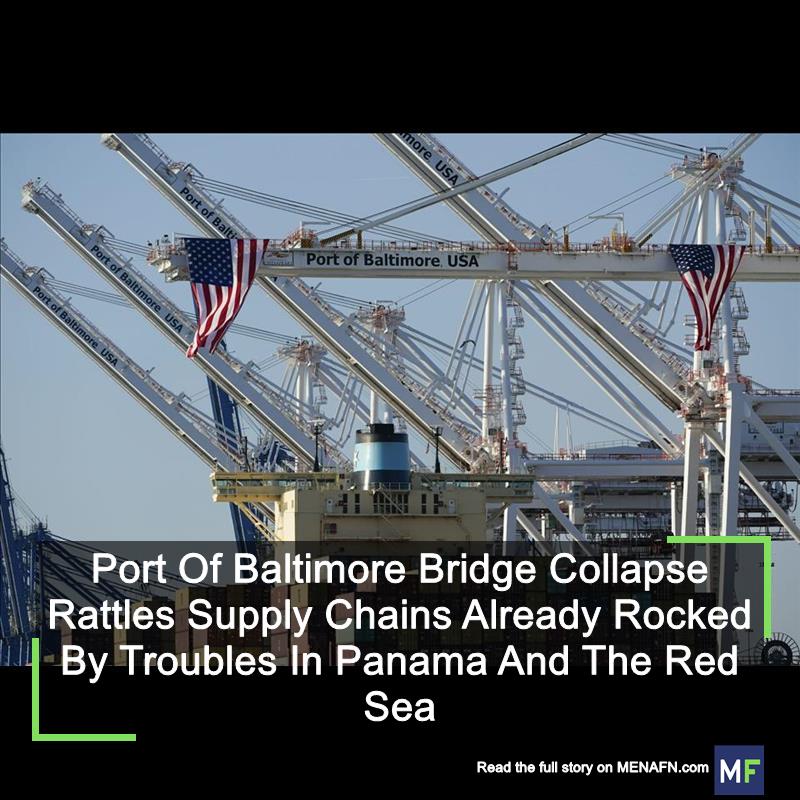
Port Of Baltimore Bridge Collapse Rattles Supply Chains Already Rocked By Troubles In Panama And The Red Sea
The port remained open to trucks following the incident, but the loss of maritime traffic is expected to cost US$9 million a day . The overall economic toll is likely to be higher as billions of dollars of goods are rerouted amid the prospect of supply chains being snarled for months . It will also mean a loss of tax revenue for the city and state.
The Conversation asked Simona Stan, a supply chain and logistics expert at the University of Montana, to explain the short- and long-term impacts of the crash on supply chains.
How important is the Port of Baltimore?The Port of Baltimore is the ninth largest U.S. port by overall trade volume. In 2023 alone, it moved around 50 million tons of goods between the U.S. and other countries, much of it in large shipping containers, like those stacked on the ship that rammed into the bridge.
Although it's smaller than other ports on the East Coast and in the Gulf of Mexico, it still plays a critical role in processing U.S. international trade traffic. That's especially true for some products, such as automobiles, heavy machinery and coal . It also handles a large share of U.S. sugar imports .
What's the short-term impact of its closure on supply chains?The immediate impact will be felt by the 15,000 or so workers in the port and about 140,000 others who depend on it. It doesn't mean they'll be laid off, but drastically less traffic would mean less work to go around.
Companies and consumers should expect some delays for packages that would have otherwise been processed by the port. How long depends on how much time it takes for ships to be rerouted to other terminals, but it should only add a matter of days or up to a week or two.
Baltimore accounts for only 4% of overall East Coast trade , so it shouldn't have a major impact. Dealers will probably experience some delays receiving imported cars and light trucks, but things should be resolved within days or weeks.
What's the long-term impact?The problem is that supply chains have been under stress from multiple directions lately.
Houthi attacks on ships in the Red Sea and Panama Canal bottlenecks have lengthened delivery times and increased costs for companies that rely on East Coast ports.
The pause in maritime traffic at the Port of Baltimore adds one more point of pressure for trade in the region. This may lead more shippers that have a choice to send more freight through West Coast ports, which have not suffered much from the Red Sea attacks and Panama problems.
This could also mean more business for trucking and rail companies if it means they have to transport more goods from the West to East Coast.
How does this supply chain shock compare with other recent ones?From a supply chain perspective, this was a freak accident. It's dramatic, it's graphic, and it forces people to pay attention to the issue.
But unlike the Red Sea attacks or the impact from the COVID-19 pandemic, which have led to lingering supply chain problems, fallout from the bridge collapse will be temporary.
That said, we'll likely see public pressure on companies to try to prevent such a thing from happening again – even though the risk of ships striking bridges is very low.

Legal Disclaimer:
MENAFN provides the
information “as is” without warranty of any kind. We do not accept
any responsibility or liability for the accuracy, content, images,
videos, licenses, completeness, legality, or reliability of the information
contained in this article. If you have any complaints or copyright
issues related to this article, kindly contact the provider above.


















Comments
No comment